This Is Hezbollah's Arsenal Of Weapons It Could Rain On Israel
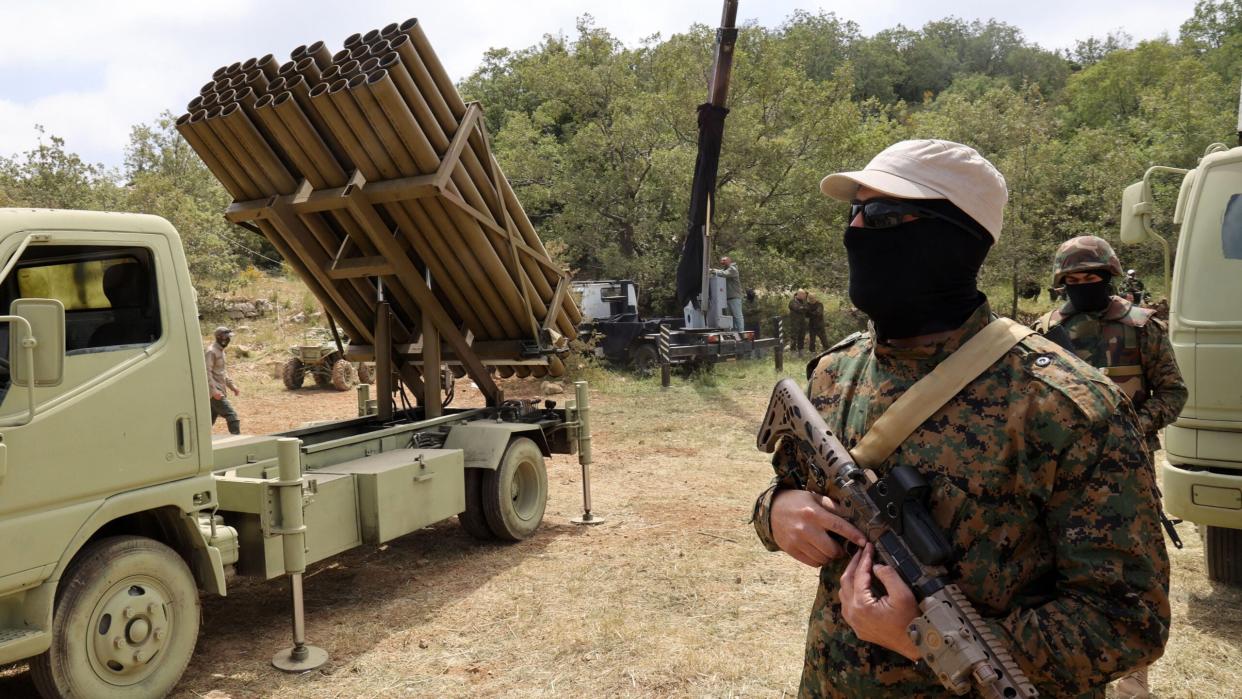
With the latest war between Israel and Hamas now in its sixth day, concerns are only growing about the risk of Hezbollah becoming more deeply involved. With the situation now delicately poised, it makes sense to examine the key standoff strike weapons in Hezbollah’s possession; after all, this is a group identified as the world’s most heavily armed non-state actor.
The scale of the threat that Hezbollah’s arsenal poses to Israel cannot be overestimated. This, of course, is hardly a new development, with Israeli concerns already having led to extensive measures being taken to curb the flow of weapons being transferred to Hezbollah from Iran, its major sponsor. Still, Hezbollah poses a grave threat to Israel, in particular its ability to rain fire on targets throughout the country, including with far more advanced and hard-hitting weaponry than what Hamas has been able to muster.
Before looking at Hezbollah’s standoff weapons in detail, however, let’s recap the situation so far, in regard to the group’s participation in the ongoing conflict.
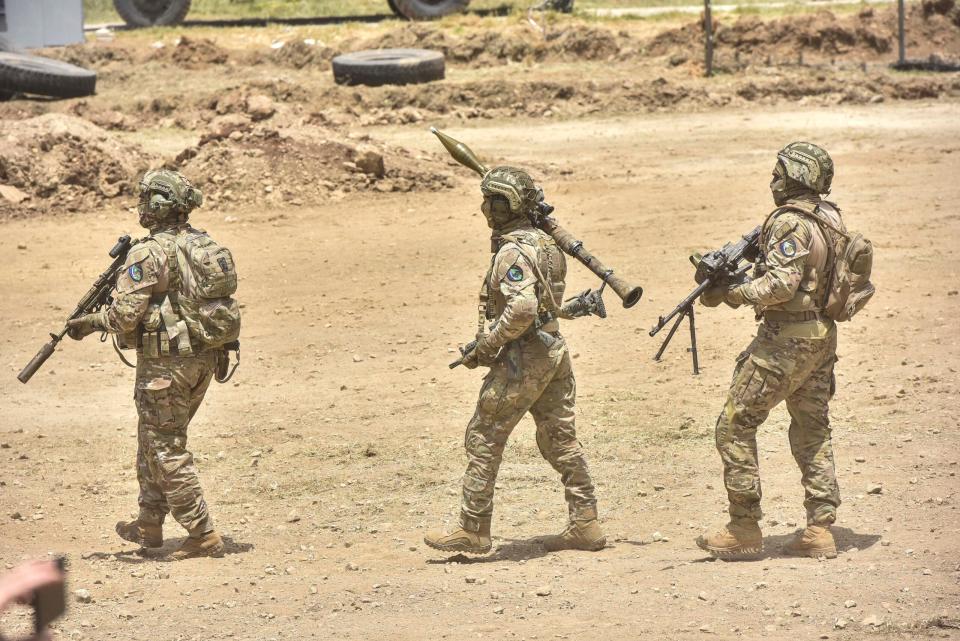
So far this week, Israeli attacks on targets in Lebanon have left at least four Hezbollah fighters dead. Those attacks, involving artillery and helicopters, were in response to what the Israeli Defense Forces (IDF) described as an incursion into northern Israel by “a number of armed terrorists.”
“In response to the launches identified from Lebanese territory toward Israeli territory, IDF soldiers are currently responding with artillery fire,” the IDF reported on Tuesday, adding that “approximately 15 rockets were launched from Lebanese territory.” Four of those rockets were claimed as intercepted, with 10 apparently coming down “in open areas.”
So far, exchanges of fire between the IDF and Hezbollah have been limited, but there are clearly fears that an escalation could be imminent.
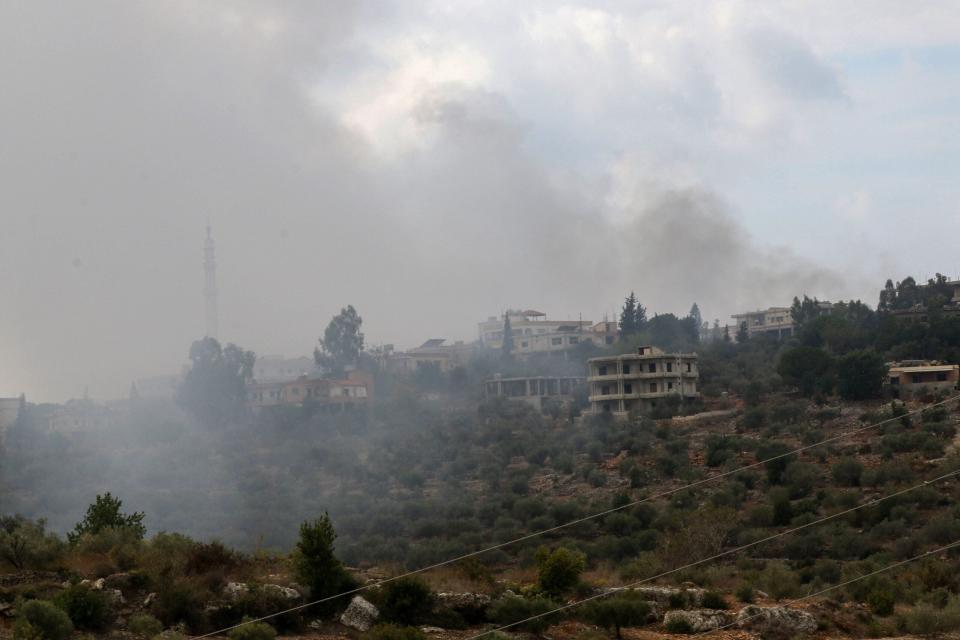
The U.S. has sent a carrier strike group and many additional fighter aircraft into the region as a contingency measure and to deter aggression by additional actors — with Hezbollah and Iran being the focus. Hezbollah has in turn made threats against the U.S. naval presence in the region. Those threats are not as hollow as some may think.
https://twitter.com/Alfaiomi/status/1712061123283787794?s=20
As we have highlighted already, Hezbollah’s entry into a wider conflict in the region would have potentially enormous consequences. Not only does Hezbollah have a large ground force, but the militant group is stocked with a huge arsenal of missiles, long-range rockets, and suicide drones. With Israel concentrating on the densely populated Gaza Strip, while busy countering (primarily artillery rocket) attacks launched by Hamas, adding Hezbollah’s short and long-range strikes could overwhelm Israel’s air defenses, putting all of the country at risk of bombardment.
The result of Hezbollah becoming more involved could well see a second front open up in the north, drawing Israeli resources away from the operation in Gaza. There’s the potential for the situation to become worse still since Hezbollah has a major footprint in Syria, as well as direct links with the Iranian regime. That could see the conflict extending well beyond Israel and southern Lebanon and becoming a regional conflagration.
Rockets
The sheer scale of Hezbollah’s rocket armory is hard to conceptualize. Even back in 2016, estimates put its arsenal at around 150,000 rockets, a ten times increase over the roughly 15,000 that were said to be available to the group ahead of the 2006 Lebanon War. That number has since grown even larger. While estimates still vary widely, suffice to say Hezbollah has a rocket arsenal unlike any state actor, one they can quickly deploy to cause massive destruction in Israel.
Most of these rockets, however, are relatively small, short-range weapons, typically highly portable and without any guidance system. Nevertheless, even rockets of this type pose a threat to Israel and, when launched in barrages, they threaten to overwhelm IDF air defenses. At the same time, picking out these rockets before they can be launched and targeting them in a timely way is far from easy.
“The purpose of our rockets is to deter Israel from attacking Lebanese civilians,” Hezbollah’s Secretary General Hassan Nasrallah declared in 2006. “The enemy fears that every time he confronts us, whenever there are victims in our ranks among Lebanese civilians, this will lead to a counter-barrage of our rockets, which he fears.”
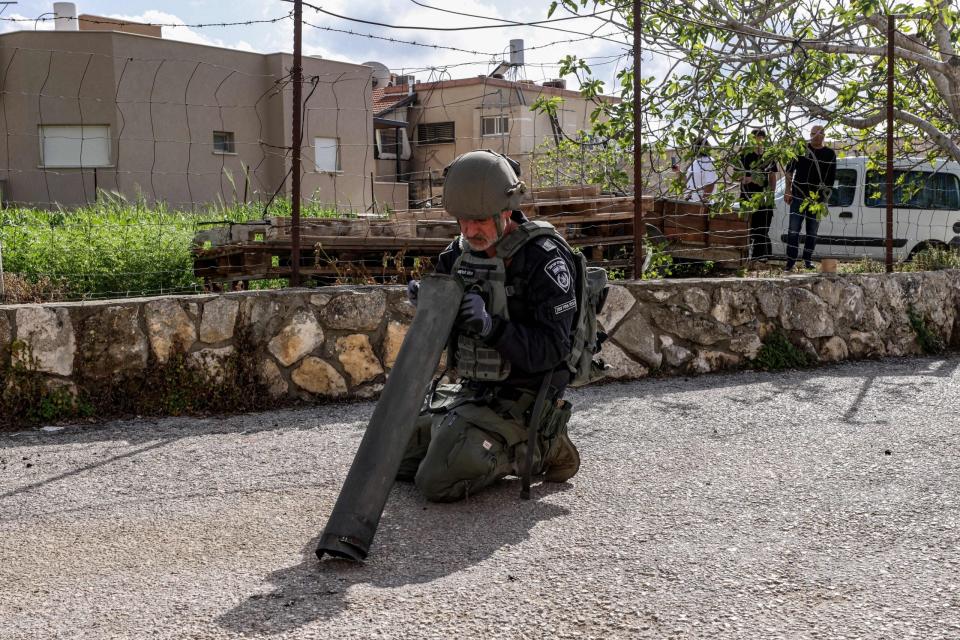
Available in 107mm caliber are Hezbollah’s artillery rockets derived from the Chinese Type 63 multiple rocket launcher. Beijing supplied these weapons to both Iran and Syria, who in turn produced their own versions, and then transferred them to Hezbollah. Tehran also delivered 12-round launchers for 107mm rockets, although the weapons can also be fired individually from man-portable launchers. These rockets have a range of between five and six miles, carry an 18-pound high-explosive (HE) fragmentation warhead, and weigh around 42 pounds before launch.
Dominating Hezbollah’s rocket ranks are the 122mm ‘Katyusha’ types, inspired by Soviet and Russian designs, including the Grad multiple rocket launcher. Typically, Hezbollah Katyushas have a range of between 2.5 and 25 miles, carry a warhead weighing 22-88 pounds, and weigh a total of 100-165 pounds before launch. Different warheads are available, with HE or submunitions options.
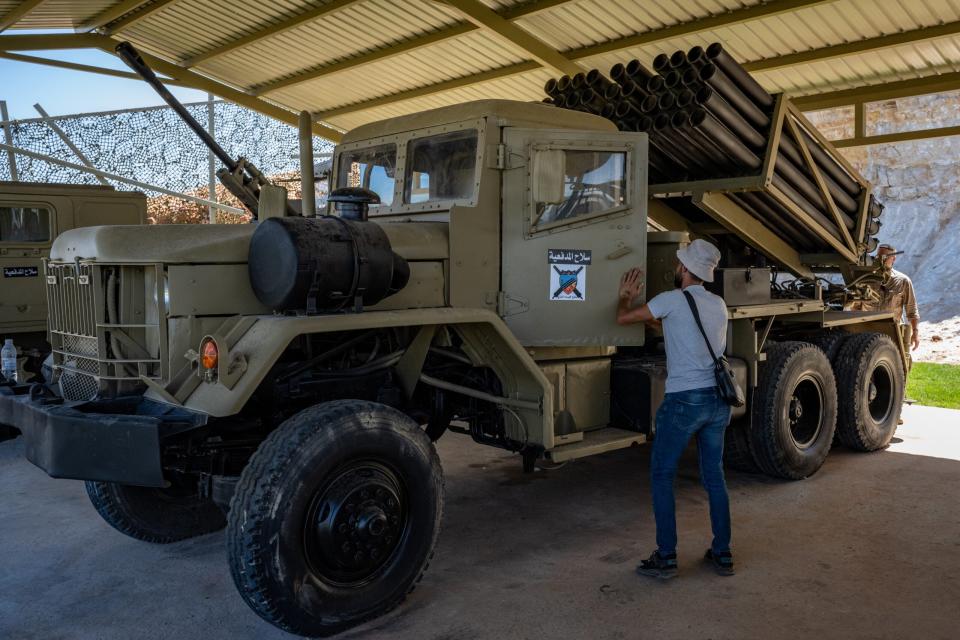
Fired from basic tripod launchers or from the rear of trucks and pickups, the number of Katyusha rockets available to Hezbollah has been increased by deliveries from Iran. Tehran has also delivered truck-mounted multi-barrel rocket launchers (MRBL) to Hezbollah, allowing salvo launches.
The Katyushas may have only limited accuracy, but their short flight time and low trajectory make them generally difficult to intercept. The IDF’s Iron Dome air defense system is said to be highly effective against rockets of this type, but even these will be strained by incoming mass barrages. This is especially true for mass fires from a group of multiple-launch rocket vehicles that can lay devastation to broad areas. They can be set up, and launched, and the vehicles can retreat quickly, making them hard to target.
https://www.youtube.com/watch?v=jgx2CLILh7A https://www.youtube.com/watch?v=yBtIbylToFE
The Hezbollah arsenal also includes the Chinese-developed Type 81 rocket, also in 122mm caliber, but which can be fitted with a cluster munition warhead. Depending on the warhead, the range of the Type 81 varies, but with a HE warhead, it can hit targets at a range of 13 miles.
The Soviet Union replaced the iconic Grad rocket with the BM-27 Uragan, a multiple rocket launcher firing weapons also of 122mm caliber. These weapons are known to Hezbollah as the Raad-2 and Raad-3, have a range of 37-43 miles with a 110-pound HE warhead, and have a launch weight of 617 pounds. At least some of Hezbollah’s Uragan systems came from Soviet production and were transferred by Syria. In comparison, the Raad-2 and Raad-3 are normally mounted on light vehicles and have a smaller number of rocket tubes as a result.
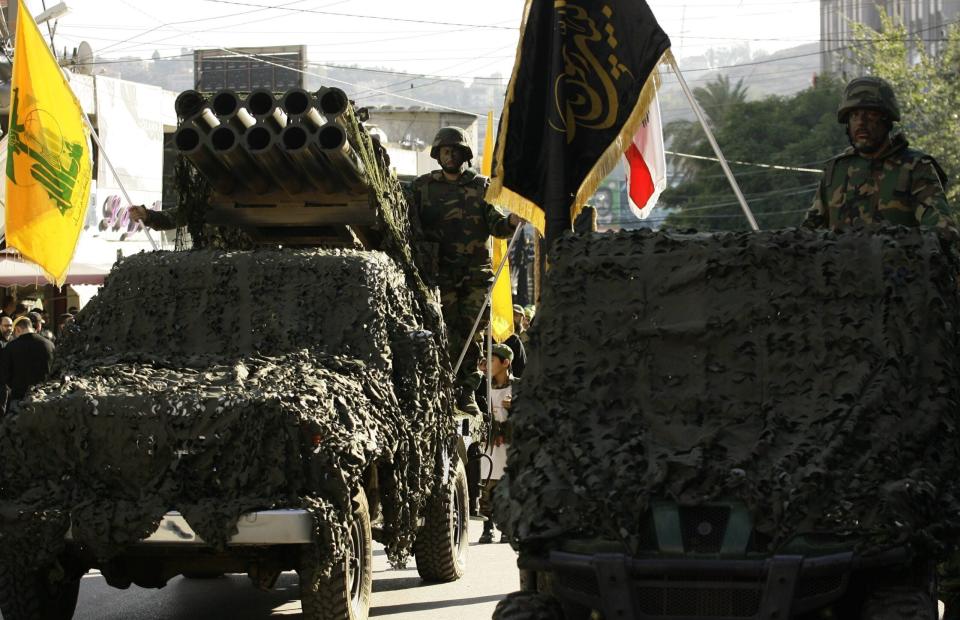
Larger than these Soviet-derived rockets are a number of Iranian-developed solid-fueled rockets, in 240mm caliber. The Falaq-1 has a range of between six and seven miles, carries a 110-pound HE warhead, and weighs a total of 245 pounds before launch. The Fajr-3 has a range of 27 miles, a 99-pound HE warhead, and a launch weight of 897 pounds. It’s normally fired from a 14-round launcher.
In the 302mm caliber category is the Khaibar-1 rocket which was developed and manufactured in Syria. Apparently inspired by an earlier Chinese design, the Khaibar-1 can hit targets at a range of 62 miles when carrying a 331-pound warhead and has a launch weight of around 1,653 pounds. It can be fired from a six-round launcher and is judged to be one of the more capable designs in the Hezbollah rocket arsenal, having better accuracy and being generally easier to handle than comparable weapons used by the group.
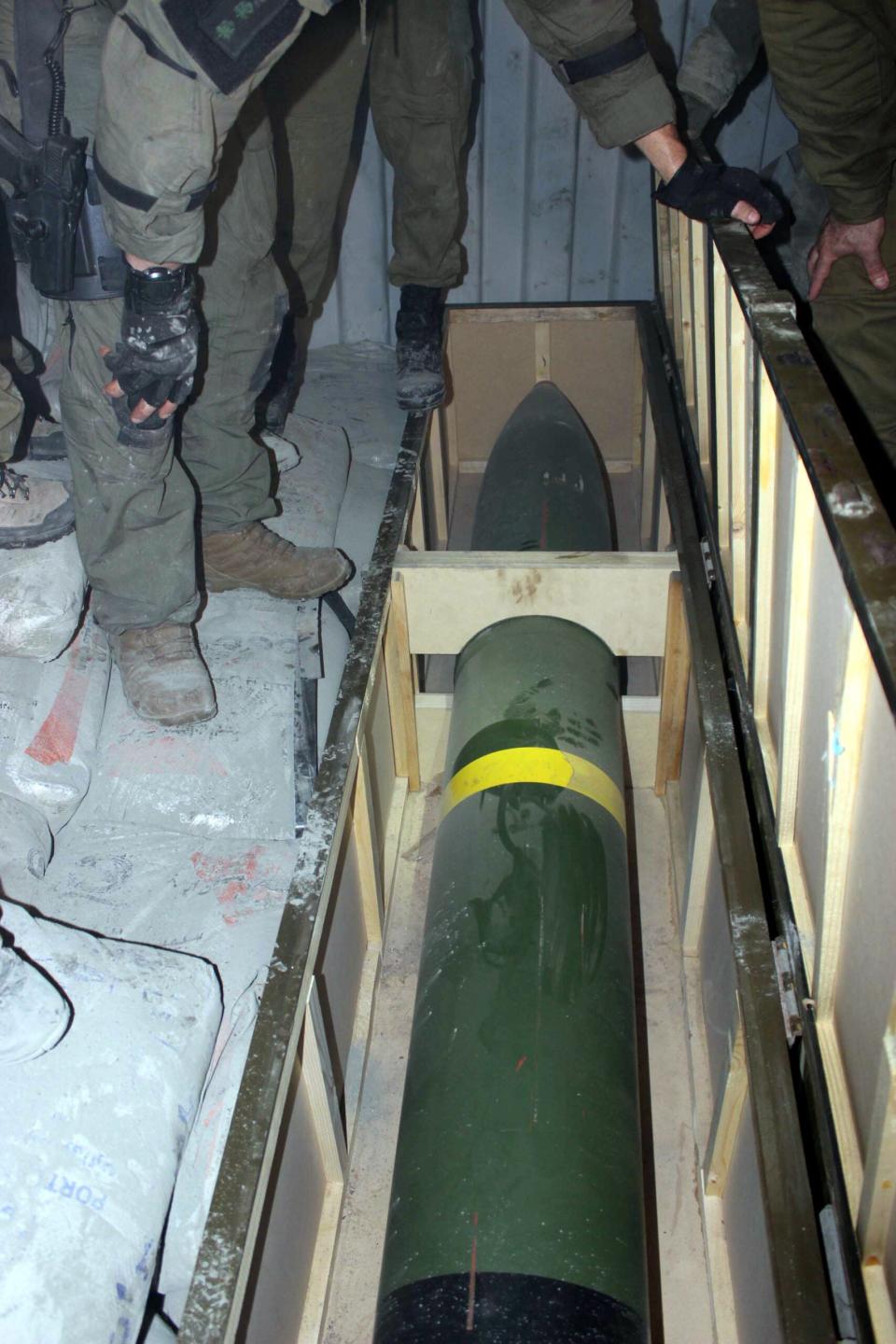
In 333mm caliber, the Falaq-2 has a range of between six and seven miles, carries a 265-pound HE warhead, and weighs a total of 562 pounds before launch. Versions of these weapons are launched from trucks or boats, but they can also be fired from a static launcher on the ground.
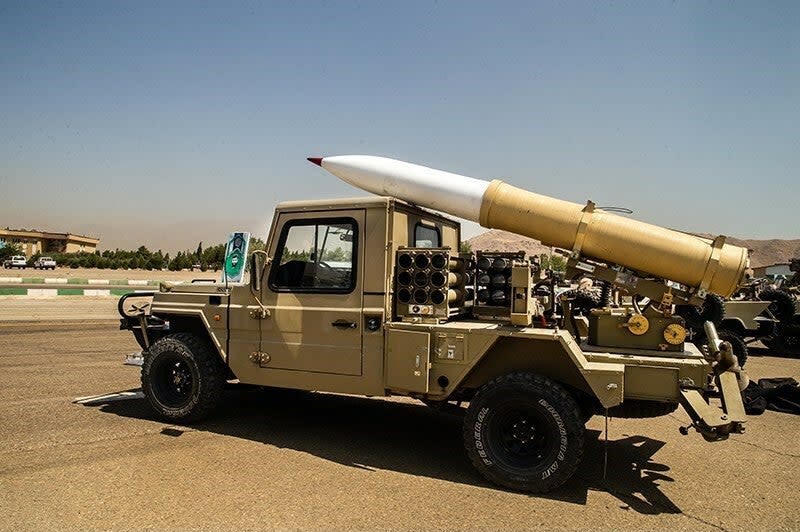
Also in 333mm caliber are another pair of Iranian-developed weapons, the Shahin-1 and the Fajr-5. The Shahin-1 has a range of eight miles, a 419-pound HE warhead, and a launch weight of 847 pounds. The Fajr-5 has a range of 46 miles, a 198-pound HE warhead, and a launch weight of 2,017 pounds. It is typically fired from mobile four-round launchers.
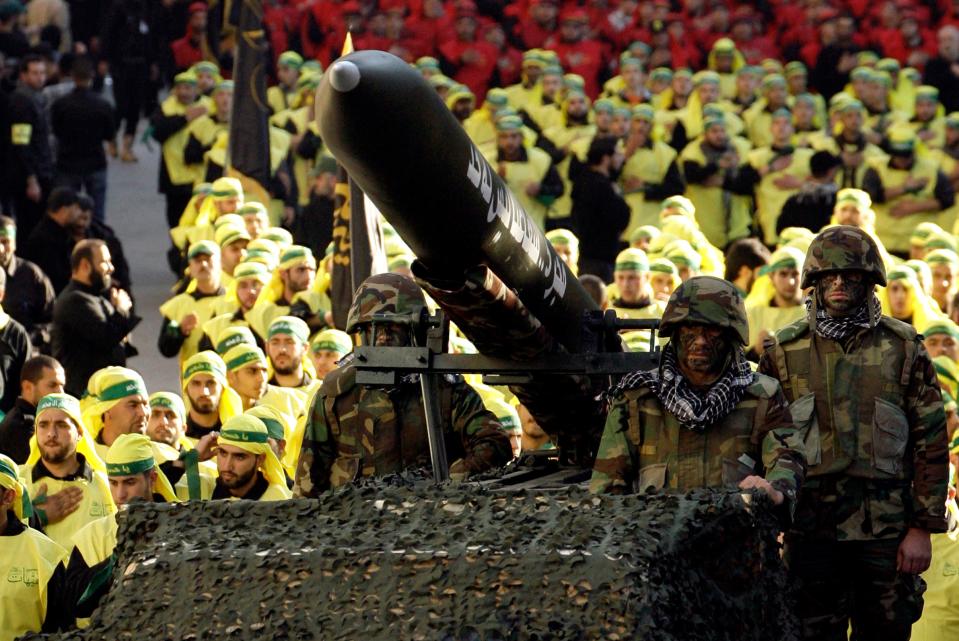
At the heavier end of the Hezbollah rocket inventory are the Zelzal series, Iranian developments of the Cold War-era Soviet FROG-7 short-range artillery rocket that were apparently delivered via Syria. Offering a much greater range and heavier payload than the Katyusha or the Iranian Fajr rockets, the spin-stabilized Zelzal can hit targets far deeper within southern Israel.
The primary versions are the Zelzal-1 with a range of 125-160 miles when carrying a 1,323-pound HE warhead, and a launch weight of 6,504 pounds; the Zelzal-2 has a range of 130 miles when carrying a 1,323-pound warhead, and a launch weight of 7,496 pounds.
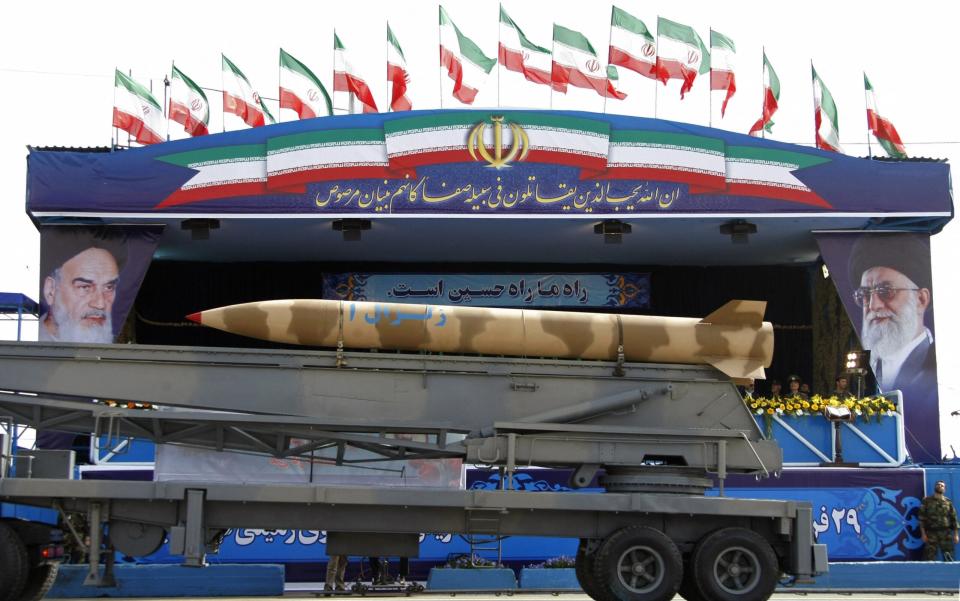
What the Zelzal lacks in accuracy it makes up for in range and destructive power, although its cumbersome transporter-erector launcher (TEL) vehicle makes it a far bigger target than man-portable or small truck-launched rockets, for example. It appears that, in the past, Hezbollah has also been unwilling to use the Zelzal in anger, perhaps fearing wider retaliation from Israel, or possibly prompted by Iran and/or Syria.
Short-range ballistic missiles
Short-range ballistic missiles, or SRBMs are ballistic missiles with a range of 1,000 kilometers (620 miles) or less. Iran, in particular, has made considerable efforts to develop missiles in this class. Some of these have been provided to Hezbollah, offering a significant advance in its long-range strike capabilities.
Capable of reaching targets at a distance of 155-186 miles, the Iranian Fateh-110 is a road-mobile SRBM that is reportedly derived from the Zelzal-2, but with the addition of control and guidance systems. Also in Hezbollah’s hands is a similar Syrian-made version, the M-600, or Tishreen.
Between them, the Fateh-110 and M-600 are some of the longest-ranged weapons in the Hezbollah arsenal. They are able to carry an HE warhead weighing around 1,000 pounds and are reported to ensure a circular error probable (CEP) of 1,640 feet. However, the Fateh-110 has become increasingly accurate in later variants and derivatives, with GPS-assisted guidance added. The use of Fateh-110s and Zolfaghar (also written Zulfiqar) derivatives to target a U.S. military base at Erbil, in Iraq, in March 2022, as well as on other targets in Syria, suggests that current variants are much more accurate, offering true precision strike capabilities. It is unclear if Hezbollah has the latest versions, but if they do, that would be highly problematic for Israel.
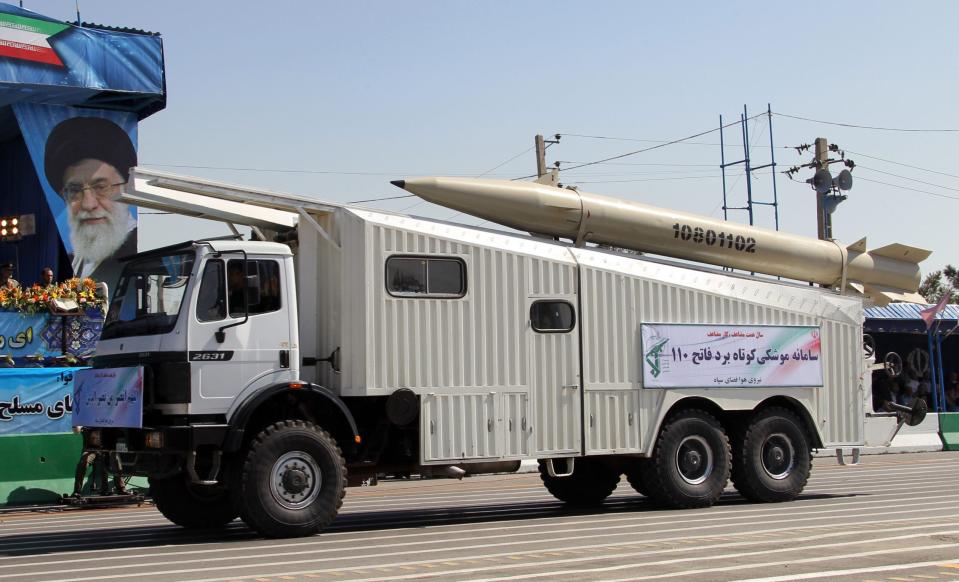
Hezbollah likely has hundreds of Fateh-110 and M-600 SRBMs available and its stocks may have been bolstered by transfers of Soviet-made Scud missiles from Syria, although this is unconfirmed. If Hezbollah operates Scuds, these would provide a moderate improvement in capabilities over its existing SRBMs, with a range of up to 342 miles and a warhead weighing up to 2,172 pounds. Although its TEL is hard to conceal, the Scud would also offer the advantage of being able to hit targets deep in Israel when fired from the Hezbollah-controlled north of Lebanon.
Regardless of whether or not Scuds are available to the group, it is obvious that the presence of SRBMs, in general, allows Hezbollah to hit anywhere in Israel and to do so with a heavy punch. This would be a particular concern if the militants were to employ such weapons to target key objectives in Israel, including its nuclear sites and key fortified bases, for example.
Anti-ship missiles
Hezbollah’s anti-ship missile capabilities were brought into the public eye in dramatic fashion when the group struck the Israeli Navy Sa’ar 5 class corvette INS Hanit off the coast of Lebanon in 2006. The weapon used was a Chinese-made C-802, reportedly fitted with an Iranian-supplied guidance system.
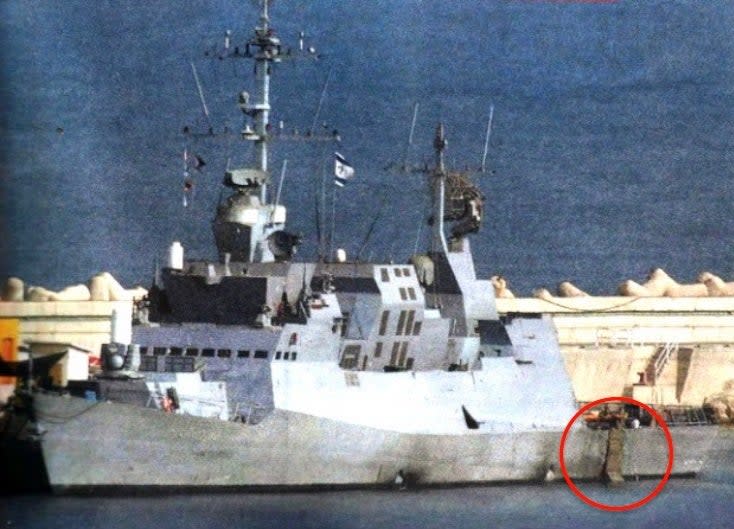
The C-802 remains in Hezbollah service but it has since been joined by further developments of the same missile provided by Iran, which received stocks of the Chinese weapon during the 1990s before reverse-engineering them, producing the Noor, which is also used by Hezbollah.
The basic C-802 is a subsonic, sea-skimming weapon with a turbojet engine, a range of 75 miles, and a 364-pound warhead.
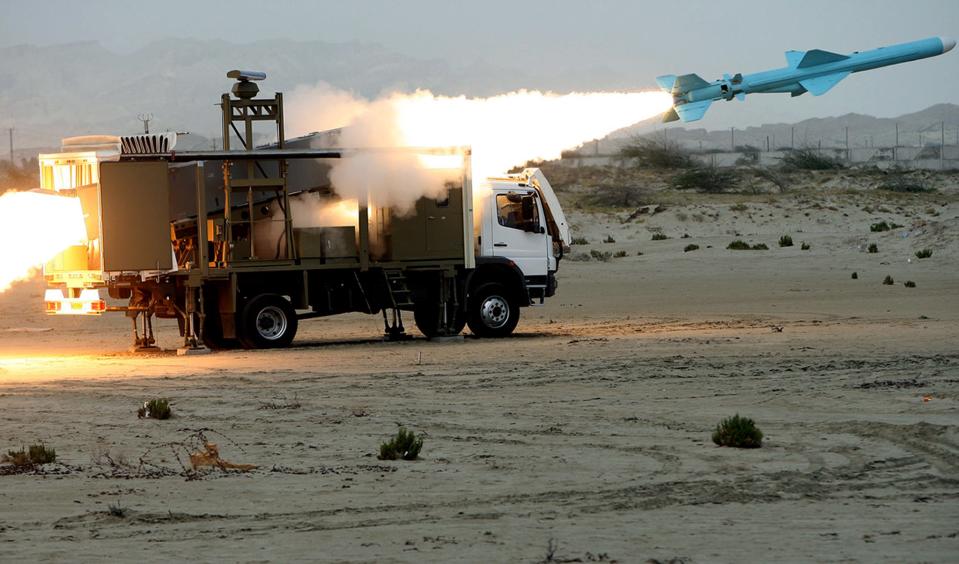
Israeli reports indicate that Hezbollah has since received an even more capable anti-ship weapon, the Russian-made Yakhont, the export version of the P-800 Oniks. It’s unclear how these supersonic missiles got into Hezbollah’s hands, although Syria, which uses these missiles as part of the Bastion coastal defense system, would seem to be the likely candidate. Past Western reports suggest that 12 of these powerful missiles are available to Hezbollah, although this number may since have grown.
For the time being, it’s unclear what kind of launch system they use. However, as Russia has demonstrated in Ukraine, the missile is also available to hit targets on land, as well. Its very high speed and flight profile make it a difficult target to intercept if Hezbollah were to decide to employ the missile in this way.
Speaking to the Israeli i24News channel, Israeli Col. Eyal Harel, the outgoing commander of the Israeli Navy’s Missile Boats Flotilla, declared: “Even now we can already deal with the Yakhont with the tools at our disposal. But we should take the Yakhont very seriously; it’s not a toothless threat. If this thing is launched and hits — that would be bad.”
https://www.twitter.com/Aviation_Intel/status/1711186578692018505?s=20
The existence of these anti-ship missiles seriously complicates maritime operations in the eastern Mediterranean, including potentially far off the coast of Lebanon. This is not only a problem for the Israeli Navy but potentially also for the U.S. Navy, which would also be operating in a contested environment if Hezbollah enters the conflict, or they would have to move far enough away that the capabilities and deterrence they provide are eroded.
There is also the potential for Hezbollah to launch more complex attacks against naval vessels, using a combination of anti-ship missiles as well as drones, to attempt to overwhelm their air defenses. They could just openly threaten any shipping in the Eastern Mediterranean, as well, which would be a credible issue to contend with.
Drones
In common with its rockets and missiles, Hezbollah has received considerable assistance from Iran in order to field an increasing variety of drones, and in impressive numbers.
Back in 2004, Hezbollah sent an Iranian-made drone briefly into Israeli airspace, where it avoided detection before coming down in the Mediterranean Sea. More drone incursions followed in subsequent months, including an 18-mile surveillance flight over Israeli territory. This situation was an alarm call for the IDF, but since then, Hezbollah’s drone capabilities have only increased drastically.
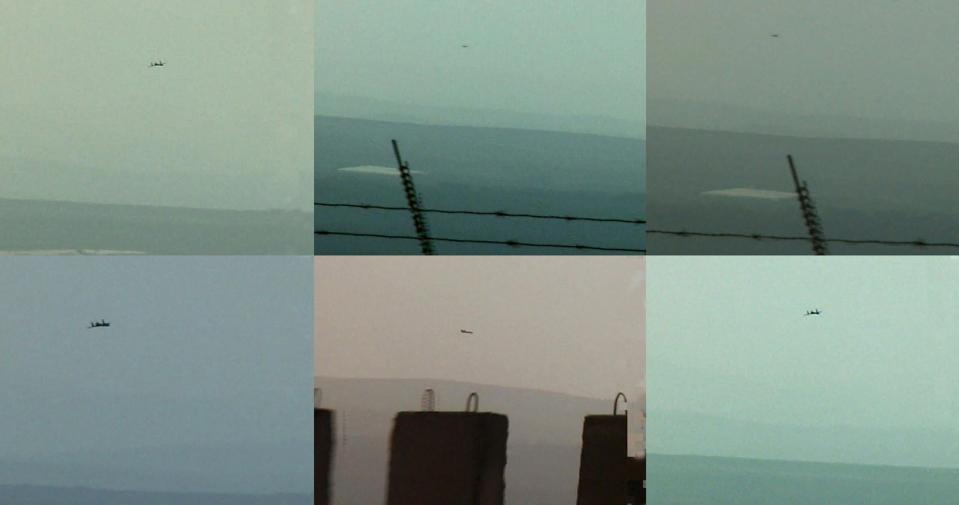
By the time of the 2006 Lebanon War, Hezbollah had refined its drone operations to the point that it was able to launch multiple drones into Israeli airspace and to launch kinetic attacks using ‘suicide drones.’ While the IDF claimed it shot down many of them, some of the explosives-packed drones succeeded in hitting targets in northern Israel.
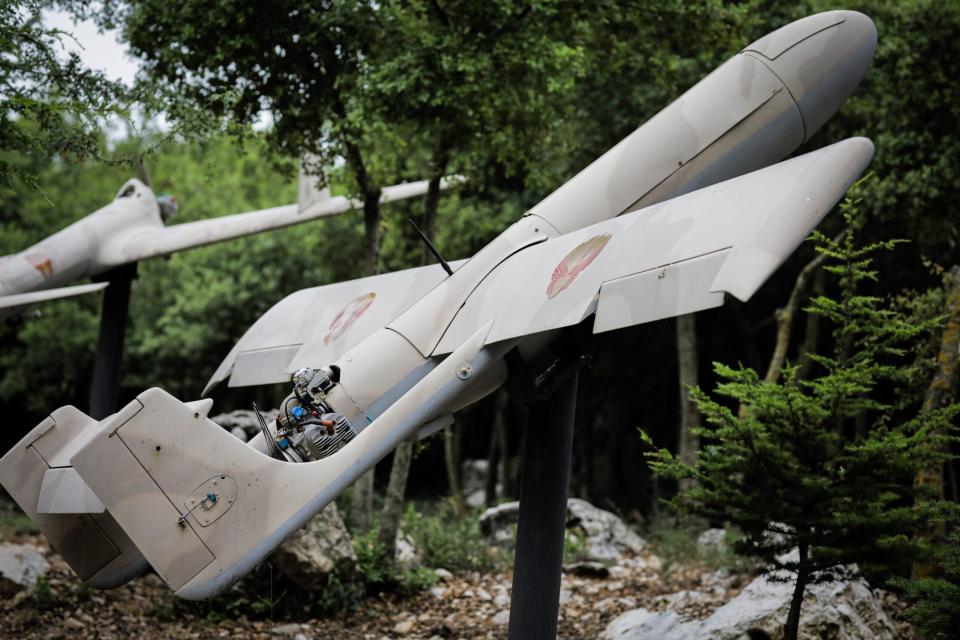
By 2010, Israeli officials were claiming that both Hezbollah and Hamas were in possession of drones with a range of more than 186 miles.
Provocative drone flights continued, meanwhile, including an incident in 2012 when a pair of the IAF's F-16 fighters shot down a Hezbollah-operated Iranian-made reconnaissance drone close to Israeli’s highly sensitive Dimona nuclear facility. Hezbollah has also expanded its drone operations into Syria, taking part in the conflict there and gaining valuable experience in the process.
While Hezbollah’s drones are not necessarily sophisticated, they are available in large numbers, putting a further strain on the IDF’s air defenses and also prompting the development of new weapons and tactics to deal with them. It seems highly possible that Hezbollah’s increasing employment of uncrewed aerial vehicles was inspired by the conflict in Yemen, in which Iranian-supplied drones have been used to significant effect by the Houthi militia against Saudia Arabia.
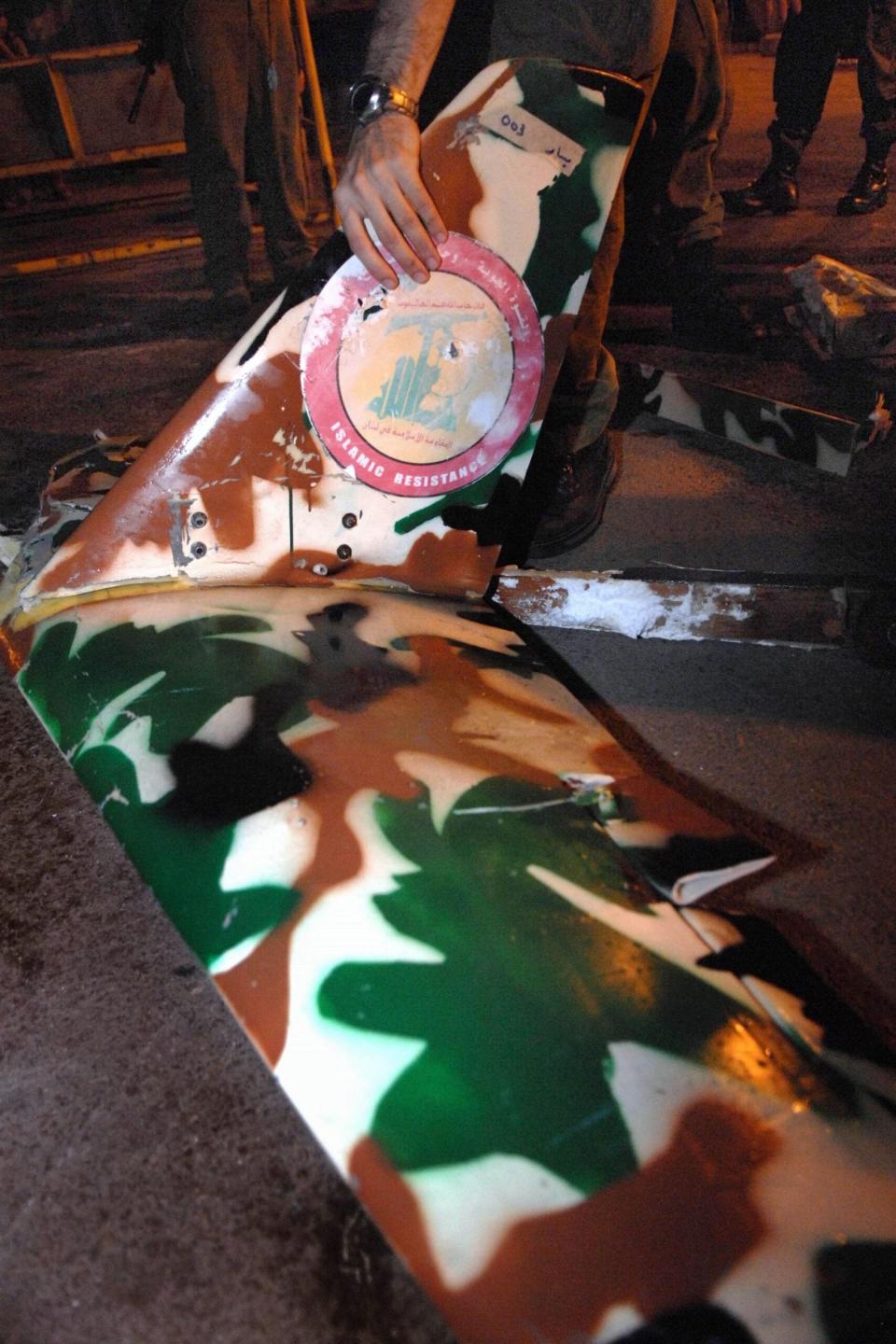
The primary Hezbollah drones today include the Mirsad-1, which is broadly similar to the Iranian Abalil-T. It has a reported range of 93-124 miles and a 66-pound payload. It was an example of the Mirsad-1 that made the notorious — brief — incursion into Israeli airspace in 2004.
Larger and more capable is the Ayoub, which has some similarities with the Iranian Shahed-129. This is assessed to have a range of at least 1,056 miles, an endurance of 15-24 hours, and a payload of approximately 330 pounds. It was an Ayoub drone that was shot down by Israeli F-16s over Dimona in 2012.
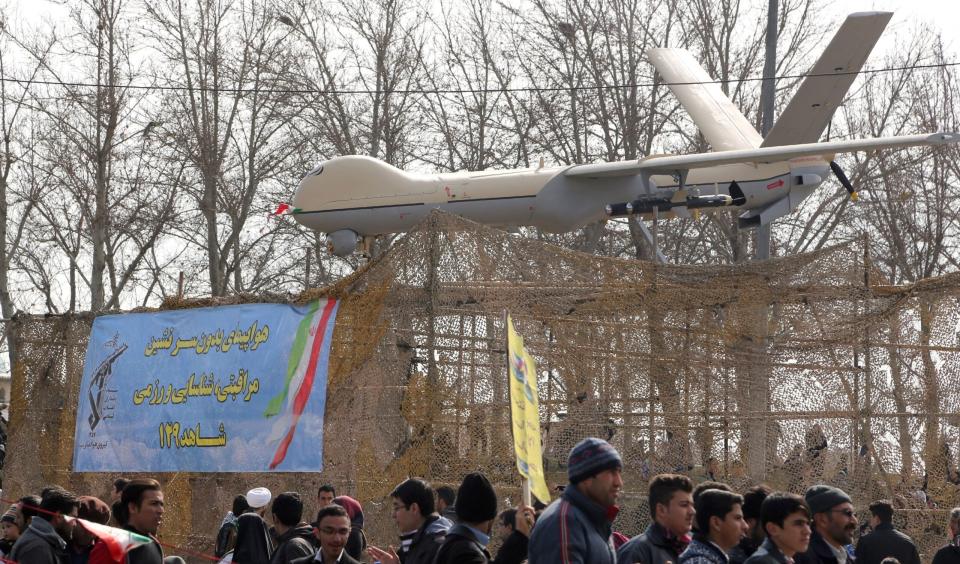
In addition to these first-generation Hezbollah uncrewed aerial vehicles, the group has very likely received new and more advanced drones, with rumors that additional Iranian-designed types, such as later versions of the Mohajer, Sammad, Karrar, and Saegheh, for a total of thousands of drones, not including smaller, hobbyist-type drones.
Hezbollah has been using drones in Syria since at least 2014. Here, however, there is a lack of clarity when it comes to which of these drones are operated by Iran, via its Islamic Revolutionary Guard Corps branch, and which are in the hands of Hezbollah operating in Syria. Examples of these are the drones that have been used in repeated attempts to attack the U.S. military base in Al Tanf, roughly 20 miles northeast of the Jordanian border.
In 2019, for example, a Hezbollah-aligned television station broadcast footage of what it claimed was one of the group’s drones shadowing an American pilotless aircraft over Syria. The organization also said it was prepared to attack American forces or their partners if they crossed unspecified “red lines” in that country. For its part, the Pentagon has described drone attacks on Al Tanf as originating from “pro-regime” forces, implying they could be from Hezbollah, one of the local militias it is working with inside Syria or Iran.
https://www.youtube.com/watch?v=l3SqJWFZ6VU
Hezbollah’s drone capabilities aren’t limited to overland operations, either. Just last year, Israel shot down three uncrewed aircraft the group sent out into the eastern Mediterranean Sea toward platforms in the Karish gas field. Those drones appeared to be configured for surveillance only Hezbollah released footage it said had been captured using the drones’ cameras. However, the potential for them to have been more of a threat was clear.
https://twitter.com/manniefabian/status/1543312037761122304 https://twitter.com/Defense785/status/1553712900430233600
Hezbollah's drone arsenal has no doubt only continued to expand in size and capability in recent years. Iran continues to make significant strides in developing and fielding various types of uncrewed aircraft. The Iranians, as well as their proxy groups, have shown off smaller drones capable of dropping munitions, including types inspired by the shape of the U.S. RQ-170 Sentinel they captured in 2011, along with various kamikaze drones designed to just fly into their targets and detonate.
https://twitter.com/FeWoessner/status/1474647011773358081
These kinds of drones can be hard to spot and shoot down and are able to launch highly accurate attacks. They are also capable of flying further than artillery rockets and even, in many cases, short-range ballistic missiles. Their ability to fly along circuitous routes and attack from unpredictable vectors makes it even more difficult for opponents to defend against them.
Iranian-designed kamikaze drones, in particular, have become a staple among Tehran’s proxies They are also now a central feature in Russia’s ongoing war in Ukraine. Iran’s continued drone developments overall can only be to the benefit of groups like Hezbollah. Israel is well aware of this threat and has been scrambling to keep up its defense posture to confront it.
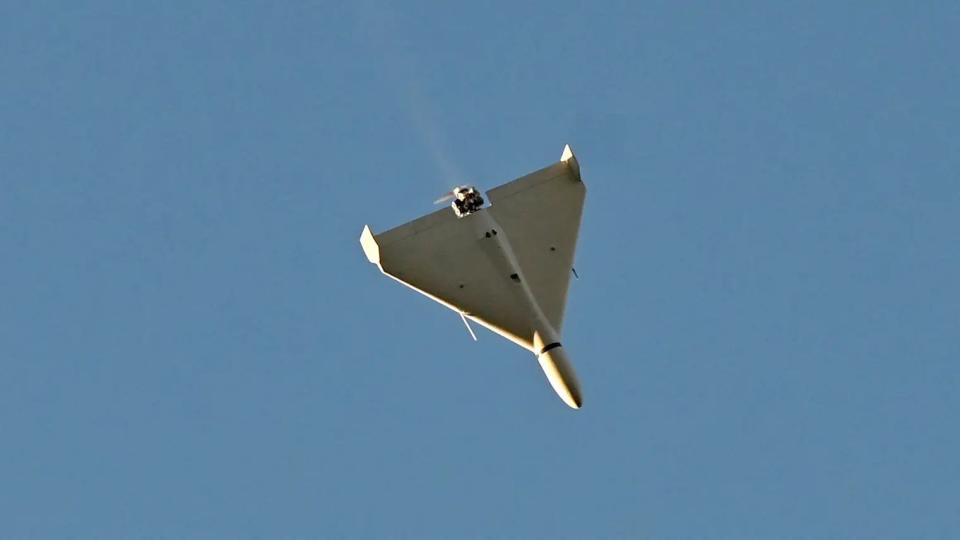
The sheer number of rockets, SRBMs, anti-ship missiles, and drones in Hezbollah’s hands makes any kind of interdiction campaign an extremely complicated proposition. If Hezbollah were planning a major attack on Israel it would almost certainly launch these weapons in barrages, to compound the problems faced by the IDF’s air defenses. This, in turn, would demand a preemptive interdiction campaign to reduce the threat posed by all these weapons, which would not only tie up many of Israel’s own strike assets but also place a severe burden on its surveillance and intelligence capabilities, in order to pinpoint the weapons in the first place.
The highly mobile and concealable nature of many of these Hezbollah weapons makes it likely that only a portion would be discovered and destroyed over the course of a conflict. The deployment of additional such forces in Syria further complicates matters, potentially requiring an expanded Israeli interdiction campaign that also targets Hezbollah forces in this country in a far more active and broad role than what we have seen in the past.
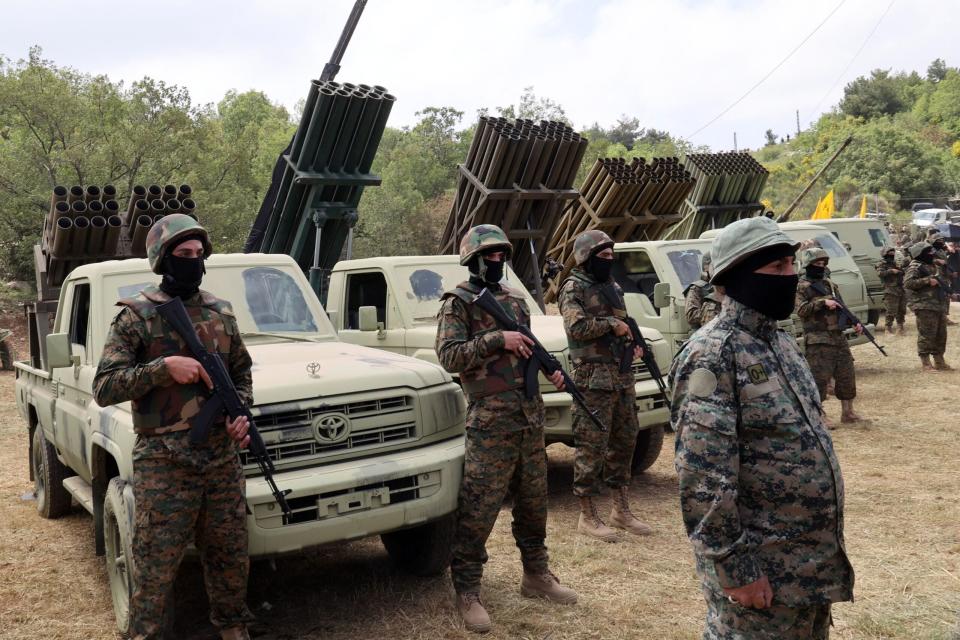
Overall, the developments in Hezbollah’s strike capabilities in recent years mean that the militia group is now able to hold at risk multiple Israeli population centers, as well as infrastructure, and launch complex multi-faceted aerial attacks against them if it should decide to. While Israel has done anything but stand still as this threat has grown, even the most advanced and deeply layered air defense system in the world would face severe problems if it was called upon to defeat a large-scale onslaught from Hezbollah. No target in the country, no matter how far south, would be fully safe from its reach, either.
Contact the author: thomas@thedrive.com

